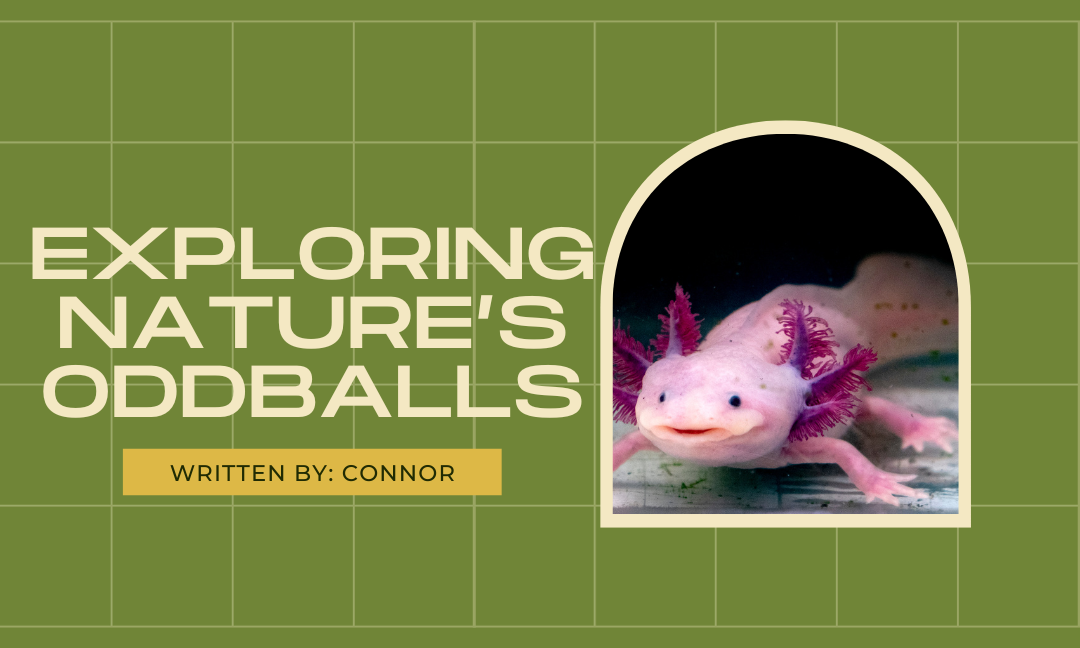Written by: Connor Fraser
I’m a firm believer that organisms are very diverse. I mean, there are millions of species ranging from humans to plants to birds to fish, and there are millions more we have yet to discover! I’m going to explore the lesser-known. The spooky, the odd, the ones you won’t see on your way to Walmart…
Superb Bird of Paradise
First stop…Superb Bird of Paradise. This guy is special for many reasons. First, what kind of name is The Superb Bird of Paradise? It’s a unique name; their scientific name is the Greater lophorina.
When males do a mating ritual, their feathers come up and their eyes seem to glow! They walk around a female like the gif above until she is wooed, or flies away.
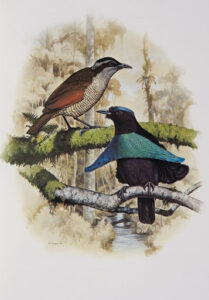
These birds are about 25 cm long, and eat fruit and arthropods (insects). Males are jet black and blue, while females are brown with a black head.
They can only be found in the Montane forests in New Guinea, which is a region on mountainsides.
Red-lipped Batfish
The red-lipped batfish, species name Ogcocephalus darwini (named after Charles Darwin!), looks like you. That’s not an insult, I promise! They look like me too; they look like humans! The eyes in the middle of the face and the lip give me that idea.
It also looks, very, very grumpy.
They are 40 centimeters long and live underwater up to 75 meters deep. You can find them near the Galápagos Islands.
Do you know what else makes them like you? They cannot swim, so instead they use their fins to ‘walk’ on the seafloor!
They sport a fleshy appendage on their heads, called an illicium, containing a chemical to lure their prey. Imagine if we had something to lure in our prey! If you are a small fish, mollusk, shrimp, or crab, watch out for this guy… because he might eat you.
I have a question – what do you get when you cross a saber-tooth tiger… with a deer? You get this:

Tufted Deer
The tufted deer – an organism that looks like a science experiment gone wrong (sorry, tufted deer), can be found in China. They live in mountainous forests and high valley jungles, munch on vegetation, and are three to five feet long.
If you ever want to see one, it’s best if you look during the night, because these guys are shy during the day.
They can use either their fangs, or antlers (if they are male) to fight for territory.
The Aye-Aye
I am torn between calling the aye-aye (Daubentonia madagascariensis) cute or unnerving. On one hand, there are photos like this:
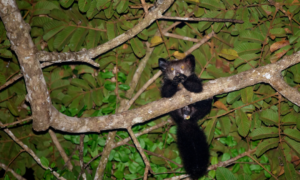
But others, like this:
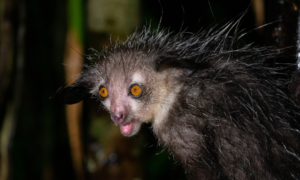
There is a legend that this creature sneaks into village homes, then pierces the hearts of sleeping humans with its long middle finger. Can you imagine one of these creatures sneaking into your home and doing that?
This superstition may come from the fact that aye-ayes aren’t afraid of humans. Curious aye-ayes will even walk up to humans to get a closer look!
This obviously is not true, however, it has caused many of these to be killed on sight. Aye-ayes are harmless.
It’s likely you will not meet one where you live anyways – aye-ayes live in Madagascar.
There is also a debate about whether this creature is a primate or rodent. I think primate.
One of the reasons I chose to write about these animals is because they are considered one of the ugliest animals on Earth. ‘Nuff said.
Another shocking fact is that males kill other males for the love of a female.
The axolotl (ak-suh-laa-tl) is my favorite organism on my map, it’s the one I’d like to meet in person most:
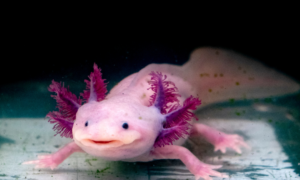
As you can see, it looks similar to a frog of sorts.
These amphibians live only underwater in the lake complex of Xochimilco in Mexico for up to about 15 years. Part of their longevity comes from their ability to regenerate limbs or even crushed spinal cords!
Something special about the axolotl is that they have no bones! They are made entirely of cartilage.
Surprisingly, despite their cute features, they are carnivores. They feed on mollusks, worms, insect larvae, crustaceans, and even some fish.
They grow up to one foot long – huge! Also, they pee through their lungs.
Sadly these beautiful creatures are critically endangered. There are an estimated 700-1200 axolotls left today.
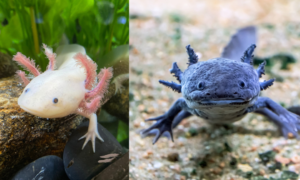
Nature is diverse. To make an article spanning to capture every species is near-impossible. While unfortunate, the bright side is, every day you spend on this earth, you can guarantee you will find some new animal… all you need to do is use the internet.
Note how these species mostly live in different countries. Do you think that if you were to travel to another country, safely, the species living there would be far different from what you read in this blog? Be sure to notice the local fauna next time you go on a trip!
The way we live has an influence on other animals. If we continue to treat the environment badly, we are going to be forced to say goodbye to many creatures, including the oddballs.
The word “oddball” is another word for “wonder.”
References:
https://australian.museum/about/history/exhibitions/birds-of-paradise/superb-bird-of-paradise/
https://www.sciencefocus.com/nature/what-is-a-red-lipped-batfish/
https://untamedscience.com/biodiversity/red-lipped-batfish/
https://racinezoo.org/western-tufted-deer-fact-sheet
https://www.nbcnews.com/id/wbna36053677
https://www.haikudeck.com/fun-facts-about-the-aye-aye-education-presentation-92I5OhjBUU#slide2
https://exopetguides.com/axolotl/axolotl-facts/#30-3
https://www.nationalgeographic.com/animals/amphibians/facts/axolotl

